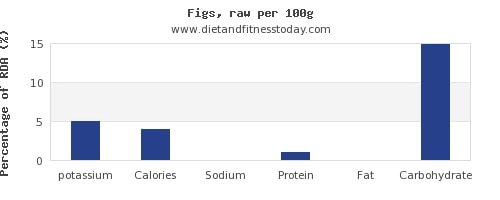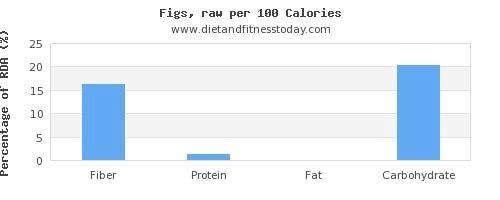If you love to eat a lot of fruit and it makes up a large part of your regular diet, it is only logical that you’ll want to share it with your best friend too. However, not all fruits are safe for our pets; some could put your dog’s health at risk.
Luckily, there is a selection of fruit that is perfectly fine to offer your dog; you only need to discover it. We will help you. For starters, we will answer the question: can dogs eat figs?
Figs offer many nutritional benefits and taste great too, so it would be fabulous to share one with your best friend ever so often!
Let’s see if that would be ok to do!

Can Dogs Eat Figs?
Let’s get down to business immediately and answer the main question:
Yes, your dog can eat figs but in moderation. A fig from time to time is good for your dog’s digestive system, but you can cause havoc if you overdo it. So how often can you let your dog munch upon a delicious fig?
One or two figs twice a week are more than enough for your dog. More than that can cause stomach upset. Be careful when you first introduce the figs to your dog, especially if it is prone to allergies. Figs might not be a highly allergenic food, but there have been quite a few cases of dogs having an allergic reaction after eating figs.
For this reason, you should always start small when giving any new food to your pet. So, the first time you offer a fig to your beloved furry companion, let him have only a half of it and observe him or her to see if there will be any reaction. The symptoms you should keep an eye for are:
- Rash on your dog’s skin
- Rash in or around your dog’s mouth
- Coughing
- Itchy eyes
- Vomiting
- Wheezing
If you see any of the above-mentioned signs of allergy, you should best take your dog to the vet as soon as possible. In this way, you will prevent any complications that may occur. It’s always better to be safe than sorry!
If your dog is not allergic, you can continue giving him figs. The only thing you must remember is that dogs should eat only fresh figs. Dried figs have high sugar content, and many more calories than fresh ones and can cause problems to your canine friend.
Why Should You Give Your Dog Figs?
Figs have a plethora of beneficial nutrients that can help keep your dog in top form.
If your dog suffers from hypertension, the high levels of potassium in figs can help reduce its blood pressure. Figs are a superb source of natural sugar that will keep your pet energized without the sugar crash that refined sugar is known to cause.

Being low in calories, figs make an excellent diet addition for dogs who battle excessive weight. If you want your dog to lose weight too, figs and other fruit can help. Figs, in particular, are quite filling and will keep your dog satiated for long. They are also rich in fiber that helps regulate digestion and are great for pets with weakened colon and weight issues. Fiber also reduces the risk of diabetes.

On the other hand, too much dietary fiber can upset your dog’s stomach or even cause diarrhea. It is one of the reasons you should never give your dog more than a fig or two every couple of days, or even less than that if your dog is a small breed.
The Side Effects Of Feeding Your Dog With Figs
We have already warned you that feeding your dog figs is not without any risk. Some dogs can be more sensitive than others, but there are certainly numerous instances of dogs experiencing unpleasant side effects after consuming fruit.
Figs contain two enzymes that are often too strong for a dog’s stomach. They are called ficin and ficusin. If your dog has too many figs at once or eats them too often, it can experience stomach issues, diarrhea, or vomiting. Some overly sensitive dogs can even have signs of inflammation on their mouth and tongue. If you notice any of these symptoms, stop feeding your pet figs immediately.
Usually, these symptoms disappear as soon as you discontinue giving figs, and there is no need for medical care. Still, it would be best to monitor your pet for a few days to make sure his or her condition does not get any worse. Mild symptoms can be treated at home, but if you feel that anything threatens your pet’s health, seek immediate emergency veterinary treatment.
According to the American Society for the Prevention of Cruelty to Animals, you should never keep fig plants in your home or around it if you want it to be pet-friendly. Namely, the fig plant is toxic to dogs, cats, and horses. If your pet ingests any part of the fig plant that could lead to life-threatening toxicity.
Fig poisoning is most often related to fig plant leaves. The leaves contain a sap that can be highly irritating to dogs even if it only touches their skin. If leaves get ingested, a dog can suffer from a severe case of poisoning.
Any part of a fig plant can pose a treat to dogs. Many pet owners are unaware of this risk and keep fig plants indoors.
What Are The Symptoms Of Fig Poisoning?
When a dog eats parts of a fig plant, he or she can exhibit the following symptoms:
- Drooling
- Diarrhea
- Vomiting
- Abdominal pain
- Irritated skin
- Watery eyes
Your dog can rub at her face in distress as most of the dogs develop some sort of rash around or inside their mouth. If you notice this or any other symptom from the list, take your dog to the vet. Even mild symptoms of poisoning require professional medical care, while severe ones are treated as an emergency.
Once you get to your vet, inform him immediately that your dog has ingested a fig plant. If the doctor is unaware of the cause of your dog’s poisoning, he will have to order a blood analysis and lose precious time. The sooner your vet determines the cause, the sooner he can help your beloved dog get better.
It would be best to tell the vet how much of the plant your dog ate too. Timely and adequate treatment can help minimize the effects of the poisoning and get your dog up and running ASAP!
What Is The Usual Treatment For Fig Poisoning?
Your vet will probably ask you if your dog has vomited since he ingested the fig plant. Vomiting is a good thing in this situation as that would mean that the toxins have left your pet’s belly. If the dog has not vomited yet, the vet will probably try to induce it.
The next course of treatment is giving the dog some activated charcoal. The activated charcoal should absorb all the remaining toxins before your dog’s body absorbs them.
If there is a residual sap in or around your dog’s mouth, your vet will wash it to prevent further irritation. The same goes for your pet’s eyes. If there is any sap in or near them, the wet will perform an eyewash. Finally, the vet will apply a topical ointment to help treat any irritations on the skin.
As a final measure, the vet can administer intravenous fluids to your four-legged friend. These fluids should hydrate your dog and stimulate urination and kidney function.
After all this, you might feel a bit scared, and wonder should you even consider giving your dog figs. You should remember that figs are not toxic to your pet, only fig trees are. If you do not have a fig tree in or around your house, your dog should be perfectly safe.
Of course, the decision of whether or not to give your dog figs is only yours. In our opinion, you should make this decision only after you discuss it with your dog’s vet. In fact, any dietary changes should be first discussed with your vet.

The Bottom Line
Figs should not harm your dog as long as you first make sure he or she is not allergic to them. It is therefore crucial that you give your pet only a small piece of fig the first time and then observe him or her to see if there is some reaction. You can gradually increase the “dosage” until you get to a fig or two every couple of days.
Remember two things, though: Always give your dog figs in moderation! Never feed your dog with any other parts of a fig tree!
In fact, if you want your dog to be 100% safe, it is best not to keep fig trees in or around your home. These trees are toxic for pets! Keep your dog safe!
Learn More: What Can Dogs Eat? A Comprehensive List Of Dog-safe Foods


